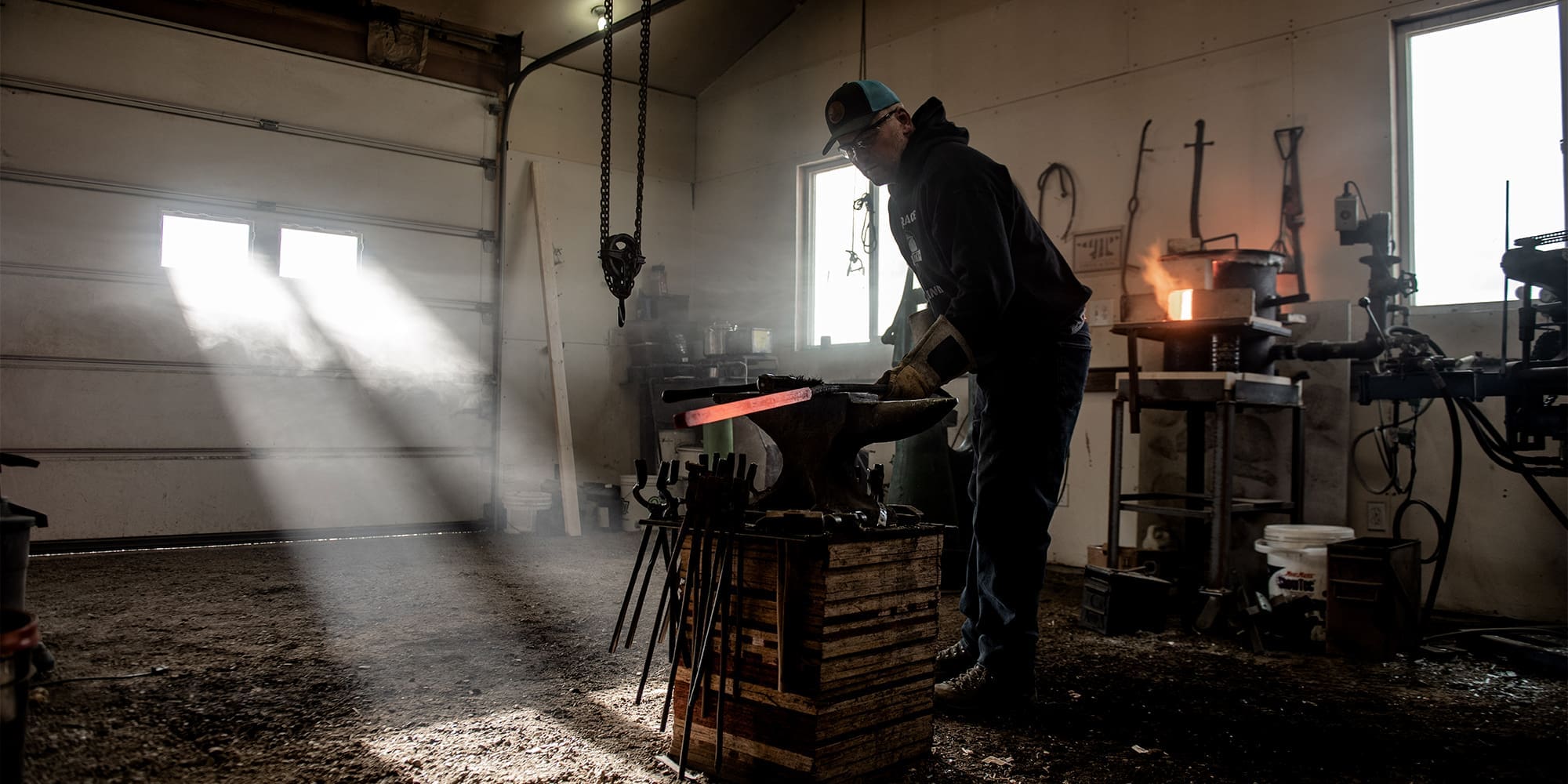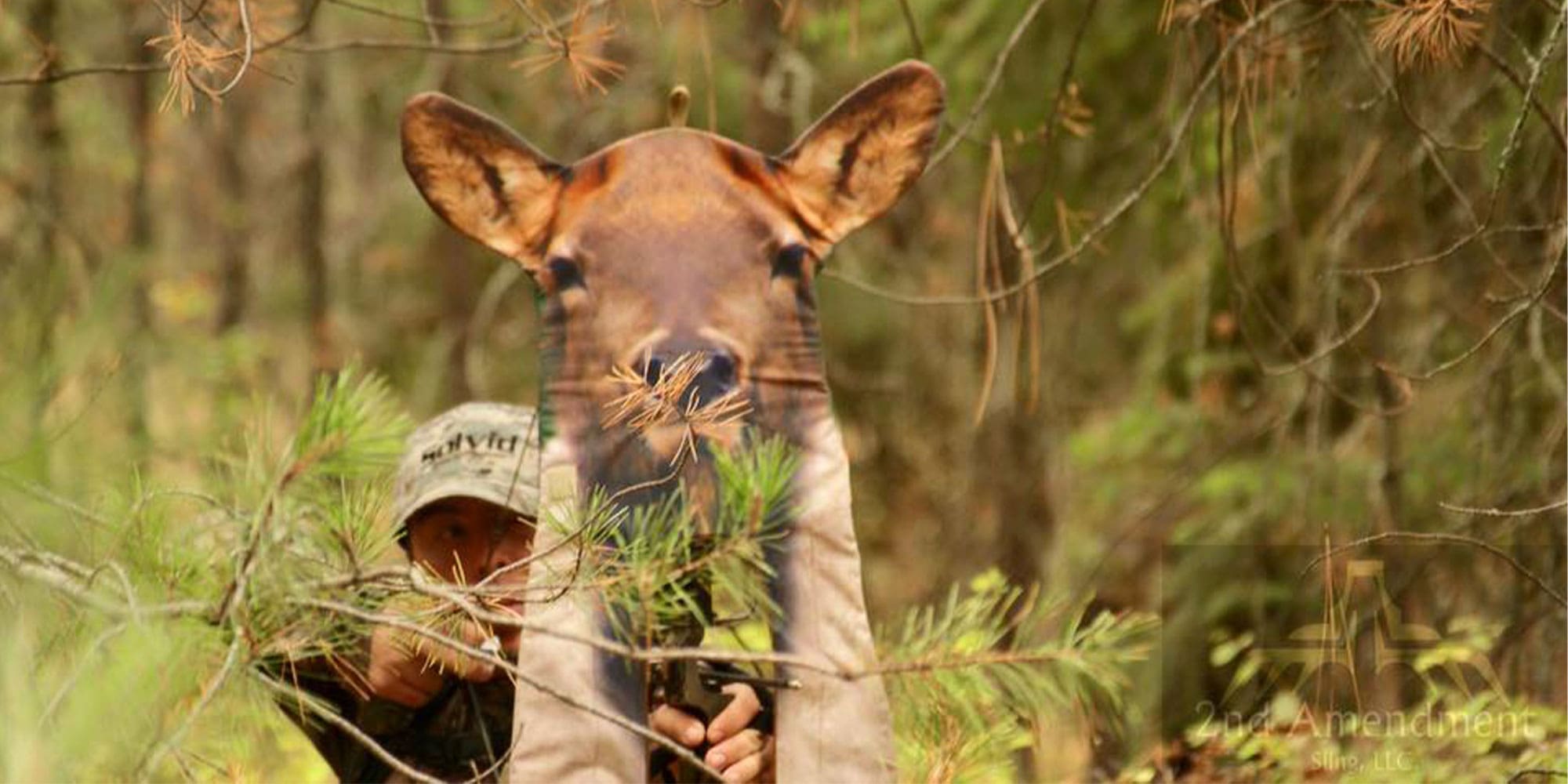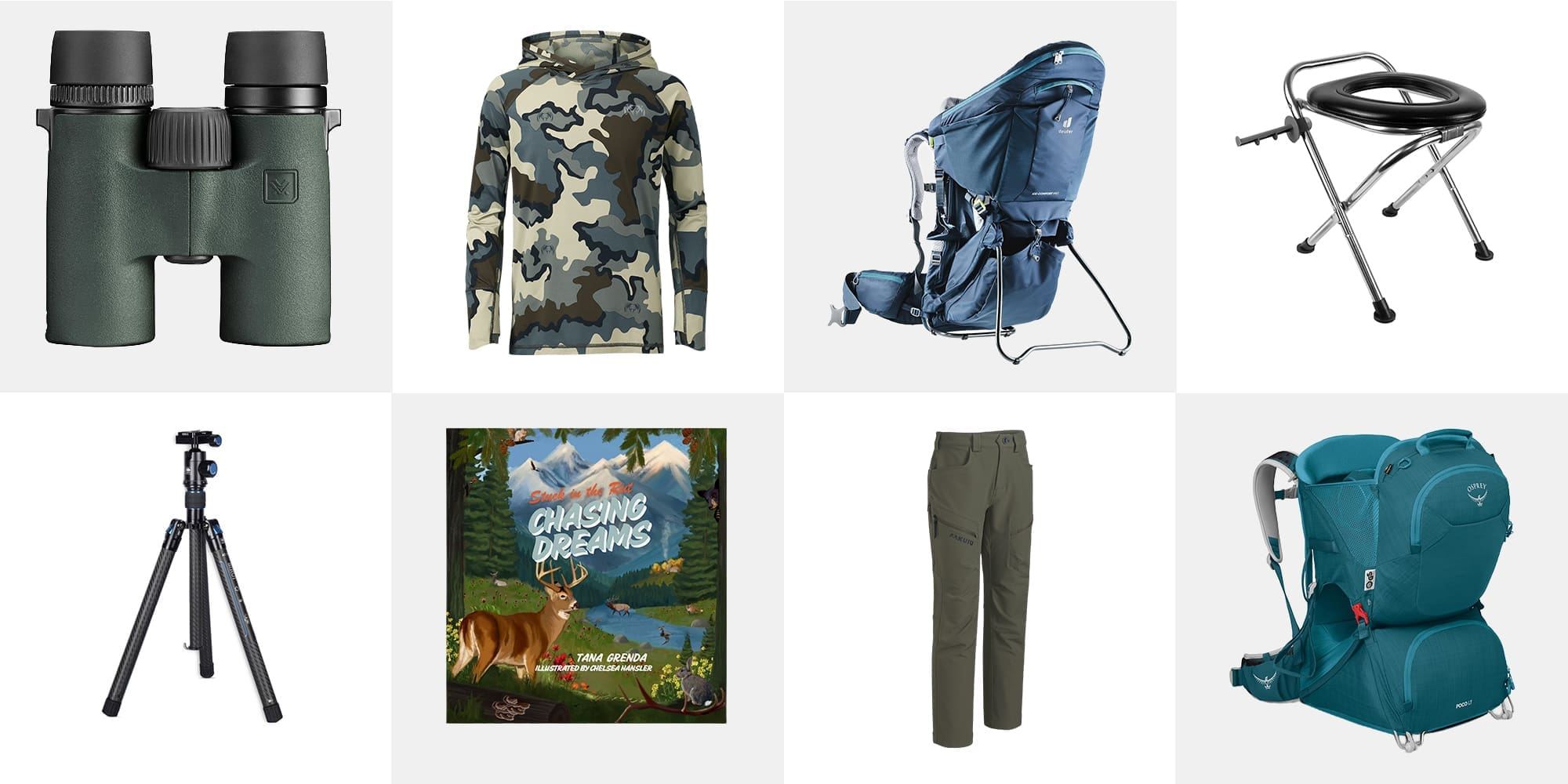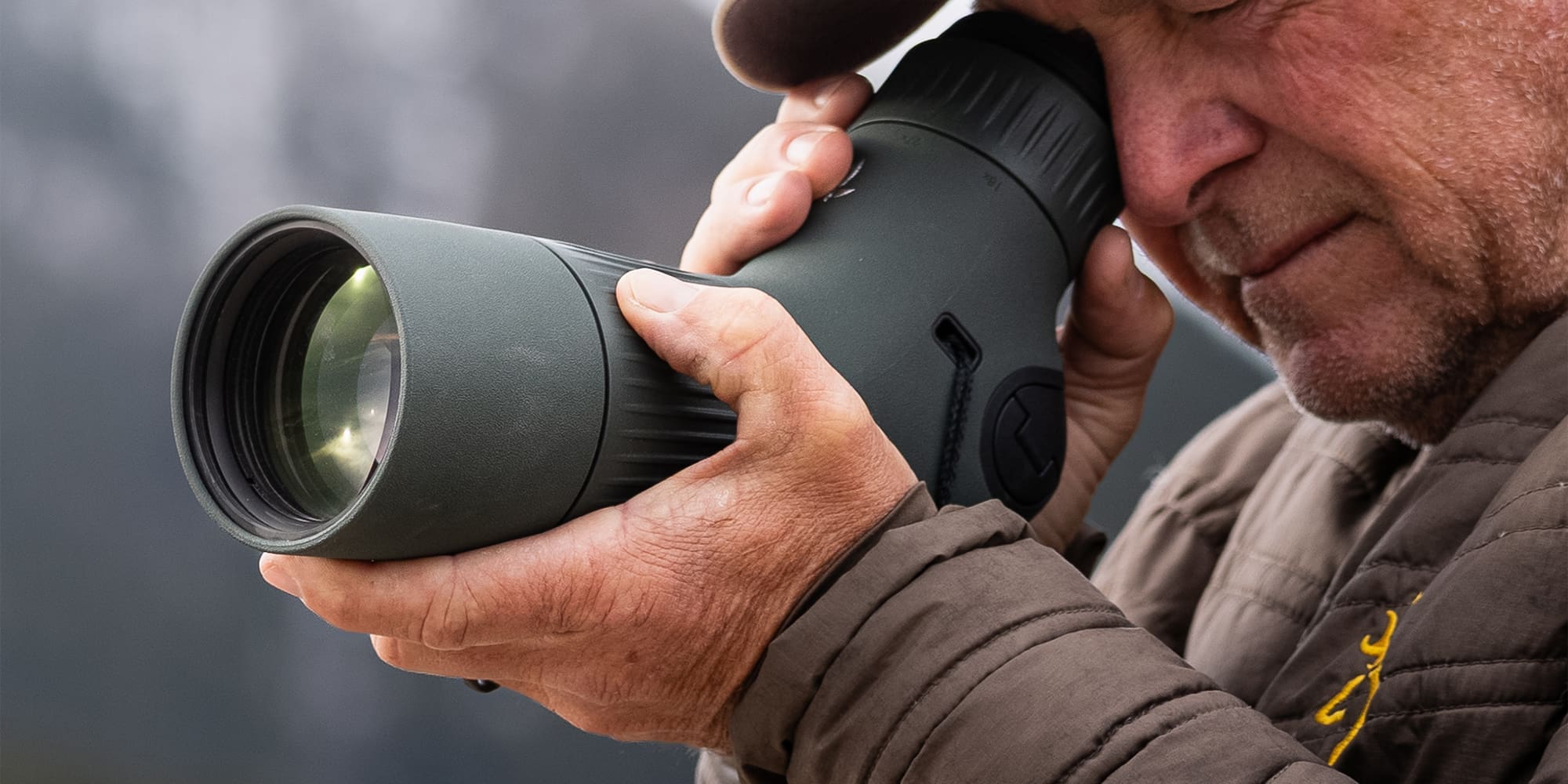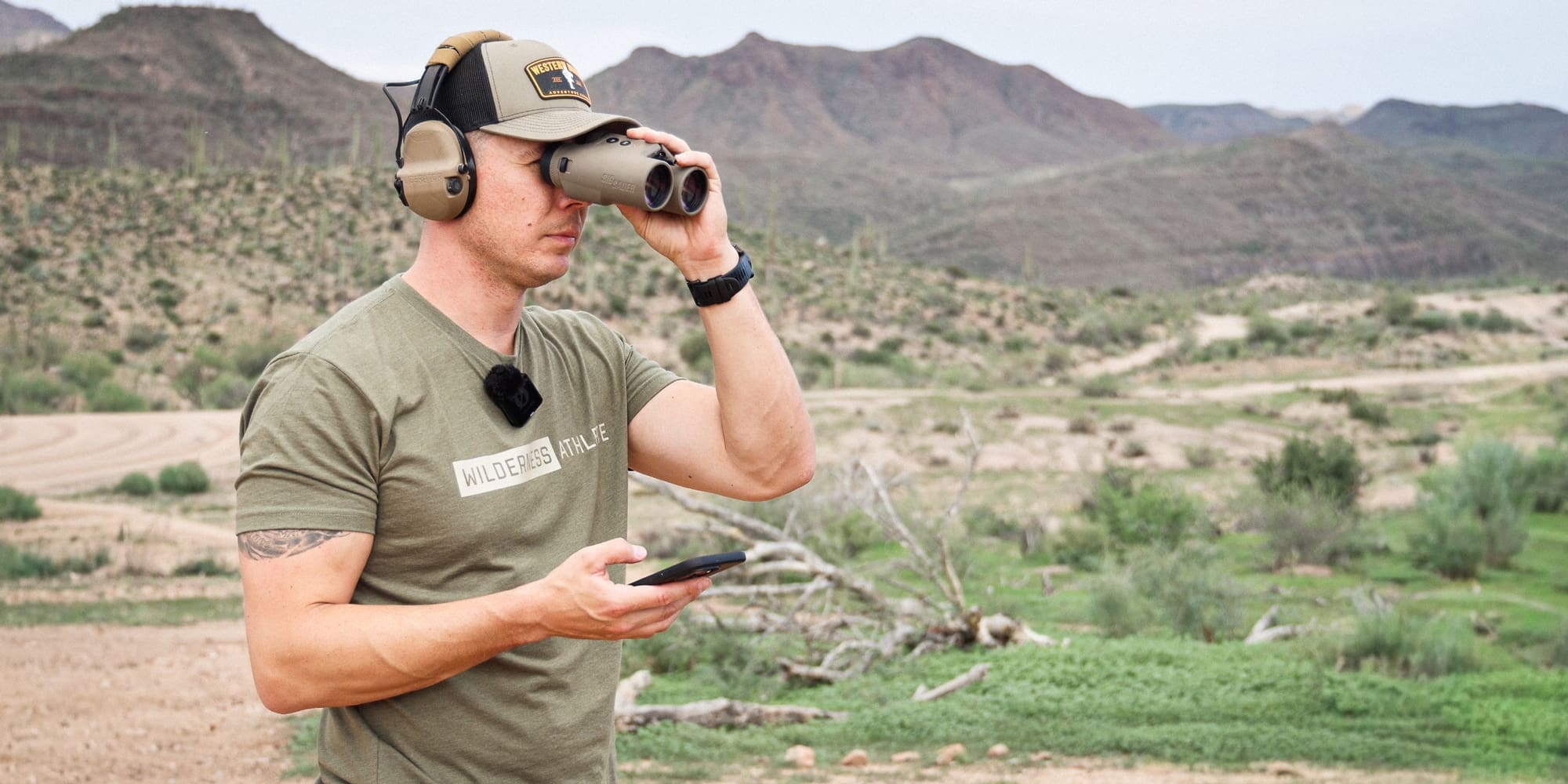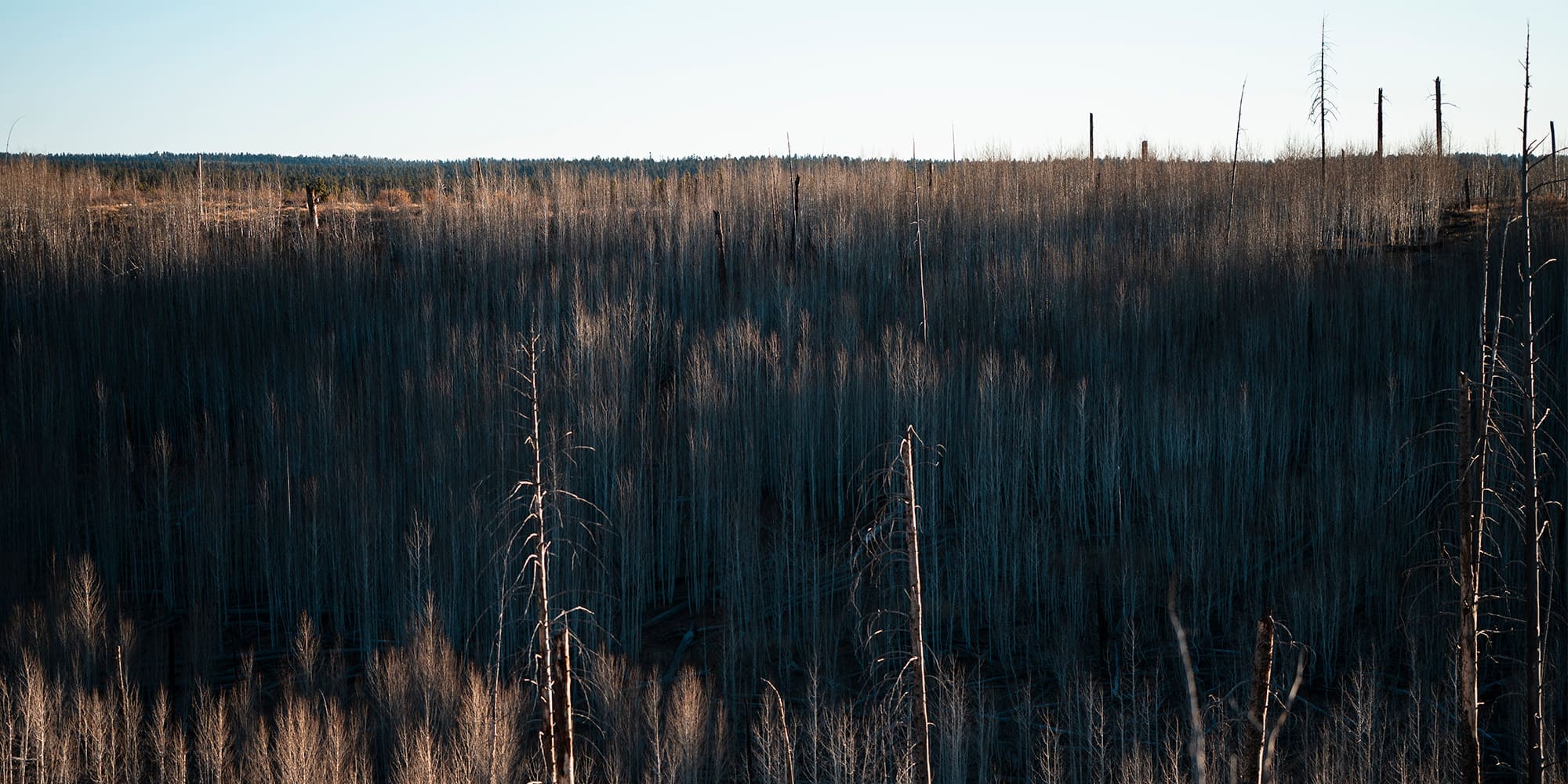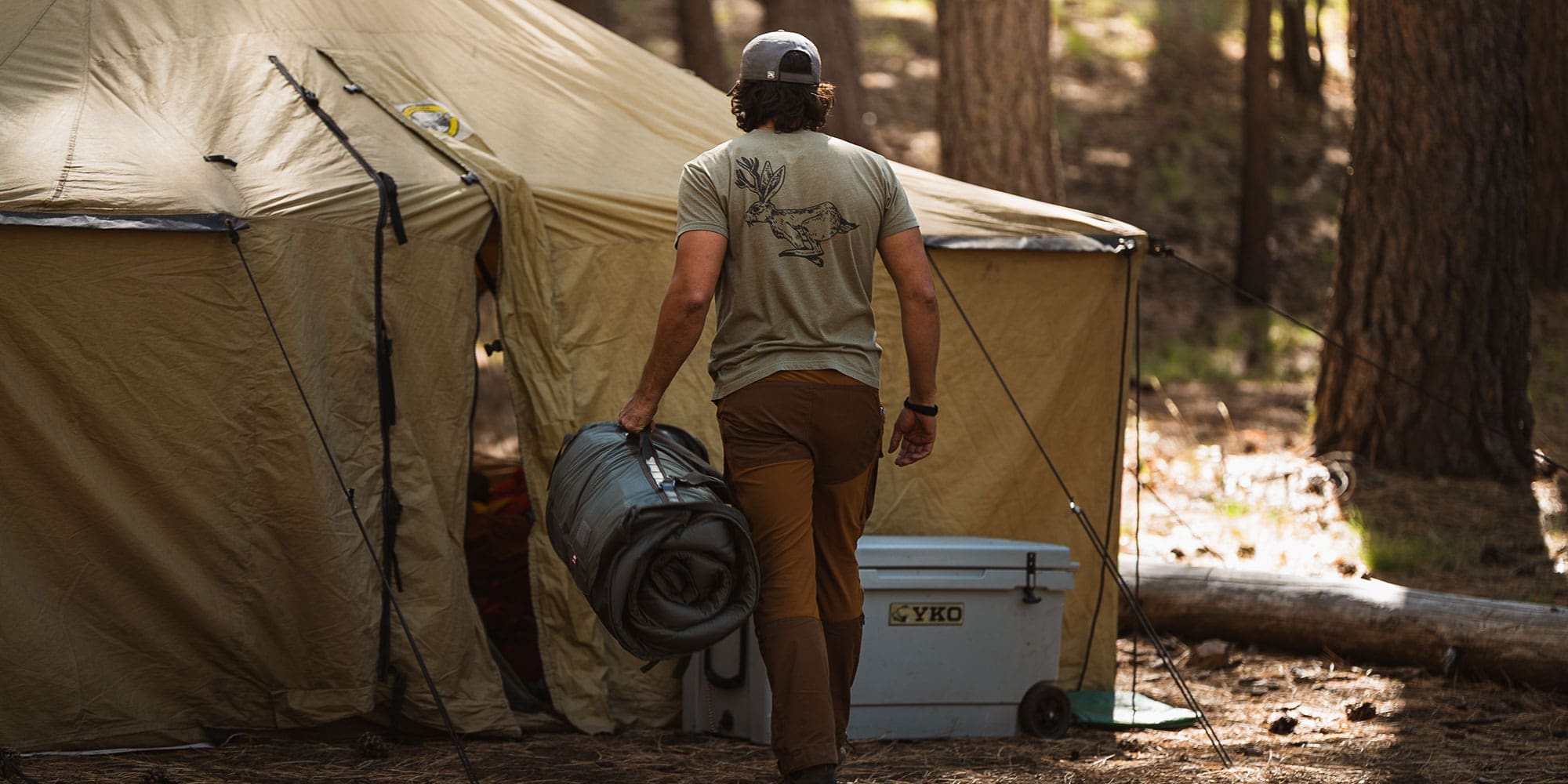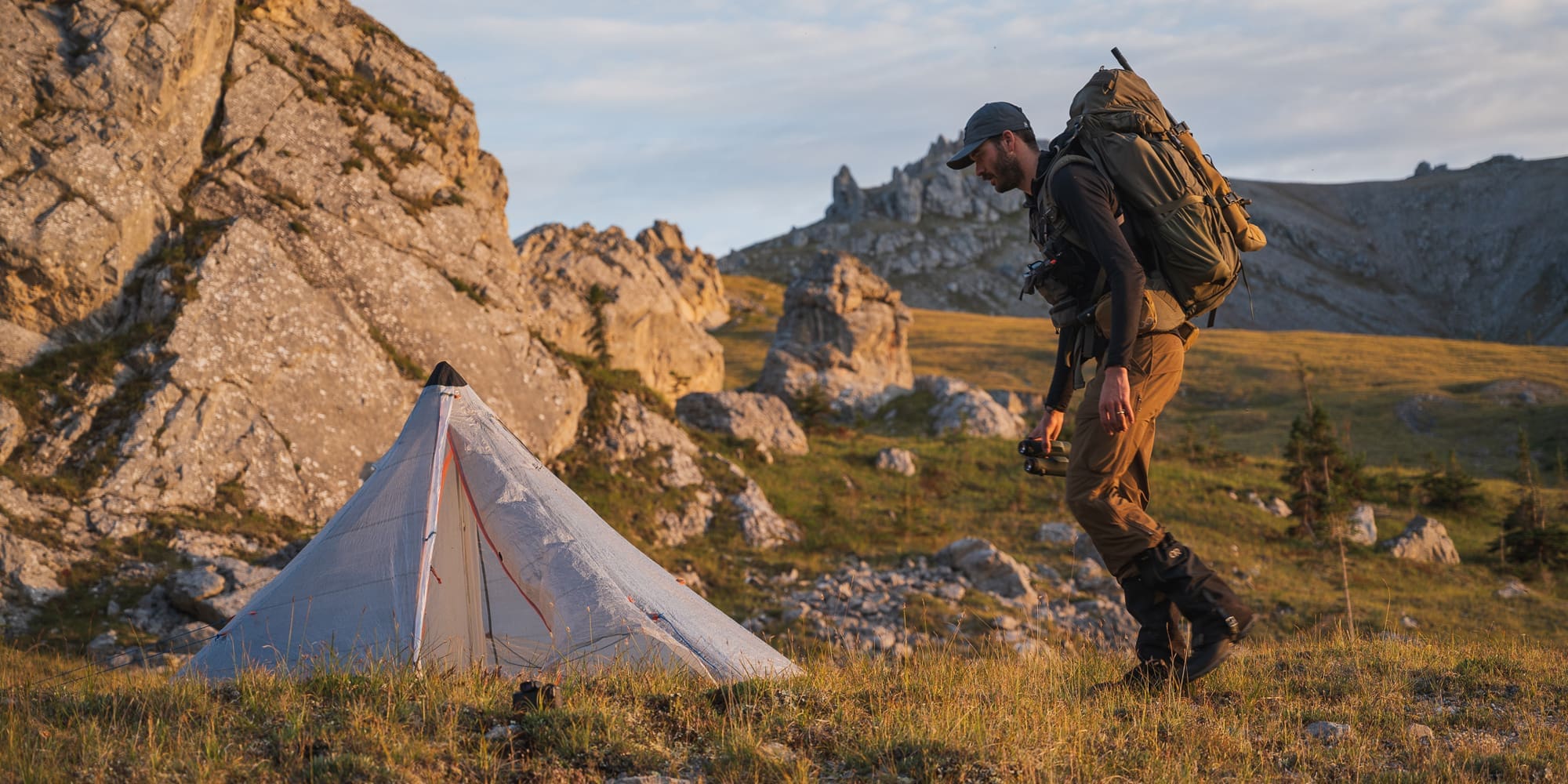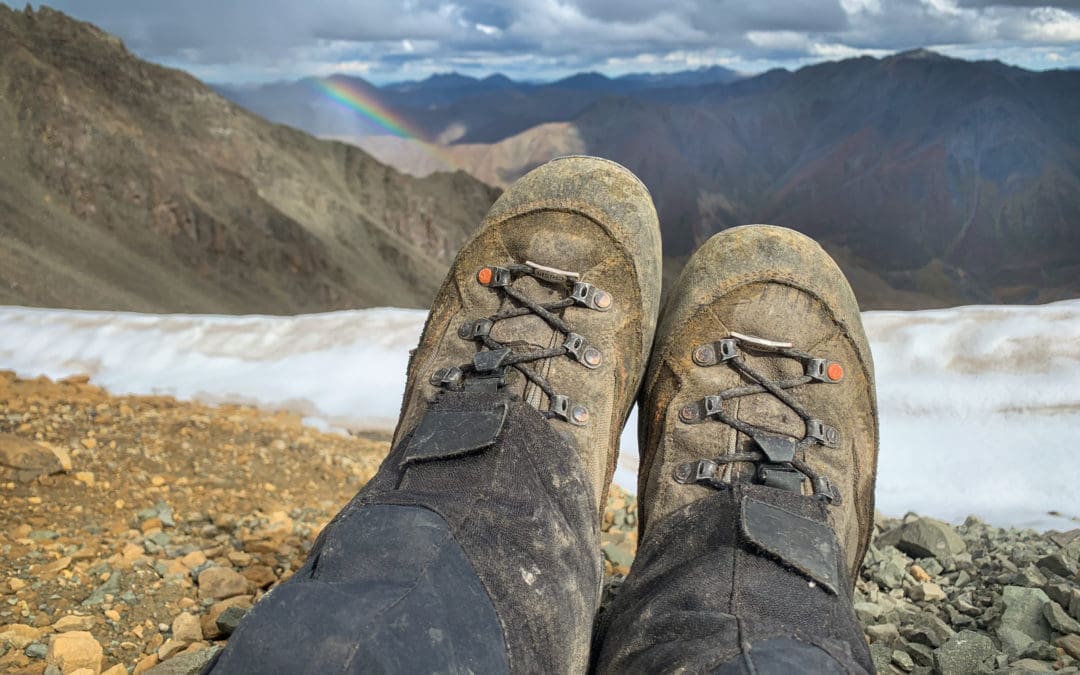
NOTICE: Certain links on this post may earn a commission for Western Hunter Magazine from Amazon or our other affiliate partners when you make a purchase. Thank you for your support.
WH Multi-Editor Boot Review Part-1
At the risk of sounding like every other hunting writer, I am going to say that nothing is more important to many successful hunts than a quality boot. You can get by with a more budget-friendly piece of gear in many categories, but if you buy the wrong boot, you will often be sorry. If your hunt depends on you putting miles on your boots and every step hurts due to blisters, hot spots, and sore feet, your mood and experience will degrade quickly.
That’s not to say that you must spend a fortune on a pair of boots, but the old saying “you get what you pay for” applies here. Some of the most comfortable boots I have ever worn were in the $200 range, but each of those pairs was completely hashed after one season. To be fair, that was with well over 100 days of hard hunting. Someone who only hunts a week or two a year could likely get a couple of years out of boots in this price range. Most of the boots we reviewed here are in the next price range up at $350-500. Yes, this is a big investment, but average users should expect to get several years of use once they make their purchase.
When purchasing a pair of boots, each hunter must first decide on what type of hunting they will be doing. Boot height, materials, and insulation should all be considered, and those characteristics are dictated by the conditions each of us will encounter on our hunts. If I was planning on mostly late season hunts where cold temps and snow were likely, I would go with an insulated, taller boot. Alternatively, if I were going to be hunting from a base camp and chasing archery elk, I would lean more toward a lighter, 6” boot with a leather/Cordura mix. Backpack hunters should look toward boots with more ankle support to handle heavier loads in uneven terrain. Whether you are buying from a store or online, make sure that the people you are buying boots from are knowledgeable and can adequately answer your questions.
When I first contacted our editors about this project, a couple of things quickly became apparent. Each of them knew what they were looking for, and each knew the value of a good boot. We were all able to put some real-time in each boot reviewed here and what follows are honest reports on what we thought of each.
Zach Bowhay: Kenetrek Mountain Extreme 400
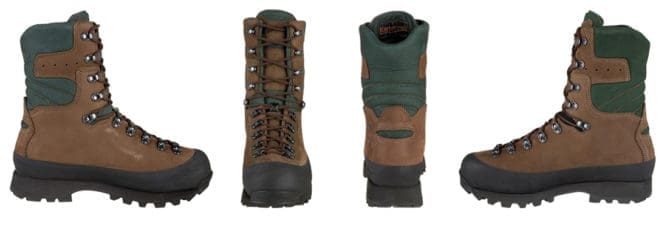
I have always been obsessed with a few different pieces of gear, and boots are high on that list. Several years ago, I got a pair of Hardscrabble Hikers from Kenetrek and they quickly became a staple in my hunting arsenal. I still wear them regularly, but they don’t have much tread left and have seen better days, so they don’t go on many hunts anymore.
Due to my love for these boots, I was excited to review a pair of Mountain Extreme 400 boots. Over the past few years, I had heard a couple of people mention how stiff these boots were and how breaking them in was a difficult process. I can honestly say that I didn’t find that to be the case. Yes, being a 10” full leather mountain-hunting boot, it is fairly stiff. They are purposely made that way to provide adequate support with heavy packs for even the toughest terrain. I found the Mountain Extreme to be very comfortable right out of the box.
After wearing them around the house for some initial break-in, I jumped right into some longer shed hunting hikes and wore them multiple days on spring bear hunts in Idaho. I rarely wear a boot with any insulation, but I thoroughly enjoyed having a warmer boot on several of these hunts where the weather went from warm to cold in a hurry and I was constantly transitioning from snow to mud and dry ground. I also hadn’t worn a taller boot in quite some time and it was nice for keeping my feet dry in snow and while crossing creeks. I am excited to wear this boot on more of my late-season muzzleloader deer and elk hunts when the mercury drops and snow is imminent.
I like the hardware on Kenetrek boots and how everything is built with longevity in mind. The lace loops are robust and swivel nicely, and the full-rubber rand does a great job of protecting the leather on the lower part of the boot. The Windtex waterproof membrane makes sure your feet stay dry while the 400-gram Thinsulate makes sure they stay warm. Of course, the K-talon outsole provides great traction. Many other brands have made a big push over the past decade, but Kenetrek remains a household name with western hunters. That shows the company’s commitment to excellence and I don’t see that changing anytime soon.
Chris Denham: Crispi Wild Rock GTX

I had just finished a hunt in Nevada where the overnight lows dropped to 10 degrees. I was wearing my non-insulated Crispi Summits and my toes were not happy. I was heading straight to Idaho for a mule deer hunt where the forecast called for even colder temperatures on top of 8-10” of snow.
Fortunately, I was driving right through Crispi’s headquarters in Salt Lake City, so I stopped to check out my options. I walked out with a pair of Wild Rock GTX. I had a few days of scouting that would involve more driving than hiking, so I could test the fit and heel-slip. By day three, I was wearing them full-time. By day six, I had a new favorite pair of Crispi boots.
The Wild Rock GTX has a full-grain leather 10” upper, with 400 grams of Primaloft insulation and a Gore-Tex liner for complete waterproofness. The Vibram outsole has a unique design that sheds snow and delivers excellent traction on rocks and mud. The midsole is a dual-density polyurethane with shock-absorbing qualities in high-impact areas. After adequate break-in, the Wild Rock is more flexible than I thought it would be. On a scale of 1-5, it is a 3.
The weather forecast for the Idaho hunt was accurate. Fresh snow fell on top of crusty snow and ice with temperatures getting into the single digits. For the most part, I was totally comfortable, but the addition of Superfeet merino grey insoles (available from Crispi for $55) stopped the cold from working up through the soles. If I had to guess, these insoles double the insulating value of a boot. If you will be hunting in even colder weather or need maximum insulation, the Crispi Wild Rock Plus GTX is now available with 800 grams of GORE-Duratherm XL Kelvin.
A full-grain 10” leather boot will be a few ounces heavier than one constructed with synthetic materials, but for cold and wet winter weather, the waterproofness and protection of real leather are tough to beat. I now have hundreds of miles in this pair of Wild Rocks with heavy pack-outs on several hunts with complete satisfaction. I have no doubt they will carry me through the next several seasons.
Randy Stalcup: Lathrop & Sons Mountain Hunter
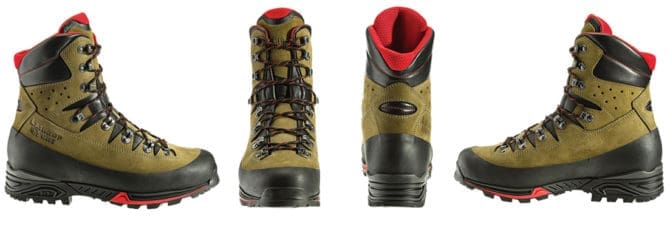
Lathrop & Sons might not be one of the first names you think of when it comes to hunting boots... but it should be. These guys don’t just make boots, they fit boots!
For years they sold other manufacturer's boots with an emphasis on determining what boots fit your feet and your type of hunting. Along the way they observed the best features from different boot makers and set out to design their own line of quality hunting boots. The result is the L&S Mountain Hunter. The first time I held these boots I was immediately impressed with their quality and craftsmanship. It was like riding in a Mercedes-Benz after years of driving a Ford Pinto. Each boot is hand-crafted from Italian leather and built to last through years of mountain hunting.
Ball-bearing hardware offers quick lace adjustment while a beveled Pro-Form rubber rand wraps the leather upper, providing side-hilling stability and protection from jagged rocks. I really like the deep heel-lock pocket that locks your heel in place and prevents slipping in any terrain. The L&S Perfect Shank and Rocker Cam midsole design made my strides feel smoother with less pressure on my feet, even with a heavy pack. Like with any mountain boot, they were a little stiff straight out of the box but broke-in surprisingly fast.
The best thing about these boots is the fact that they are MY boots. They were Custom Fit (extra cost) to my feet by the L&S owners who have over 50 years of combined specialized foot-care training. Like I said earlier, they fit boots.
Their Custom Boot System is a very inclusive process that started with me doing imprint tracings of my feet. After they reviewed my tracings they contacted me and during this consultation told me about my feet, pressure points, how I walk and what type of boot would fit me best. Only after this process was a boot selected, modified, and fitted with a custom Synergy footbed matched to MY boots and MY feet.
The boots fit like a glove the first time I put them on and have performed great on early-season scouting trips. The Arizona desert and rim country have been good tests with everything from rough hot terrain to wet riparian areas. My feet have stayed dry and comfortable with the eVent liner.
The L&S Mountain Hunter also comes in wide and insulated models so you can get the boot that is right for your feet.
$480-$500 Buy now on Lathropandsons.com
Tony Bynum: Lowa Hunter GTX EVO Hunter Extreme
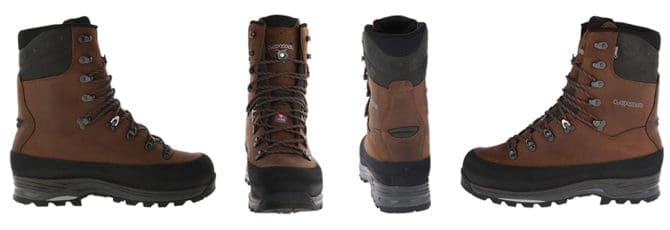
This double-stitched, nubuck, full rand boot is what a western hunting boot should be. It’s a great late-season boot for elk and mule deer hunting. However, for alpine sheep, I prefer a stiffer, mountaineering style boot. The Lowa Hunter GTX EVO Extreme is the boot you go with when you know you need something that will keep your feet healthy and get you back to camp in comfort.
It fits snug in the heel and has room in the toe box for when it’s cold. I wore them down to five degrees and my feet never got overly cold. I was able to feel secure side-hilling, on rocky steep scree, and unconsolidated rocks.
My foot is average-to-narrow, and the heel is always the hardest part for me to fit properly in a stiffer boot. I have tried every make of boot in this category. Some fit better than others, but from a build and materials perspective, they’re all in the ball game. The Lowa fit well right out of the box. I deliberately held off wearing the boot until I had a hunting trip to see if there was any truth to the “right out of the box” (ROB) theory. Always a skeptic, I’ve never felt that a western mountain hunting boot could do that.
My first trip was a mule deer hunt in the Bears Paw Mountains of Montana in typical, rugged, steep terrain; cold and often wet and muddy. The boots worked fantastically ROB, not even a hotspot! After that first hunt, I wore them everywhere, every day – more hunts, photography assignments and just walking the dog – all without a blister or hotspot. As the season wore on and temps grew colder, there was enough room on the toe box for a thicker sock. After a full season of hunting and photography trips, they haven’t stretched or lost their configuration.
Overall, I found great traction and a warm, smooth, comforting fit with no heel-slippage (always my biggest complaint with hunting and mountaineering boots, due mainly to their stiff shanks). My feet never got excessively hot or wet on the inside and the waterproofing worked. Overall, these boots are worth their rather steep asking price. The measure of a great boot is if you don’t think about your feet all day because your boots are doing their job. I would recommend them without any hesitation.
Kristy Titus: Crispi Women’s Skarven II GTX
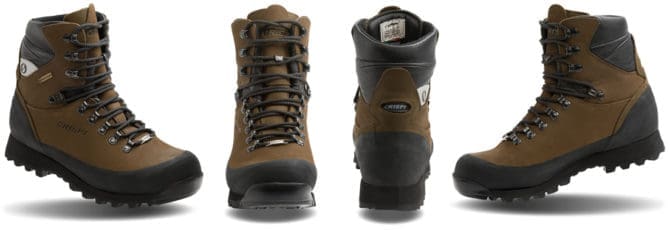
The Crispi Women’s Skarven II GTX is a traditional-looking brown alpine boot and is the second lightest-weight boot that I reviewed at 1.5 pounds per boot. This boot features a water-repellent full nubuck leather construction and a Gore-Tex lining to ensure the boot is waterproof. The full-rubber bumper on the Skarven II will withstand the roughest of terrain from jagged rocks to scree slides. The EVA midsole combined with the Vibram outsole helps to reduce the overall weight of this boot keeping it light on your feet.
The boot height is 8” which is a solid mid-height construction that offers additional ankle support for side-hilling. Crispi features ABSS or Ankle Support System which is basically a memory foam that is built into the ankle area of the boot. When you lace the boot, the locking lace on the side, combined with the ABSS will allow a fit that conforms to your bone structure making it comfortable and easy to wear. I did find that after prolonged wear in extremely steep terrain, the height of this boot did blister my shin, so the tightness of the upper laces is something that you will want to pay attention to and watch out for hot spots.
Crispi boots all fall within a set flex rating between 1-5. The Skarven II flex rating is noted at 3 which is a middle-of-the-road boot for stiffness. This boot is very comfortable to throw on and go without the worry of a big break-in period while still providing the needed stability for backpacking. The high rocking shape to the foot of the boot will also help prevent foot fatigue over distance in steep terrain.
The eyelet tongue stabilizer keeps the tongue of the boot in the correct place. Again, the big thing to remember with a full leather boot is that leather has memory, so you will want to be sure to place the boot tongue where you want it right away as the leather will pattern your foot movement.
The Skarven II is available in half sizes and is built on an American last so the fit is true to US sizing.
Colton Bagnoli: KUIU Scarpa Rebel K 8 HD - $469
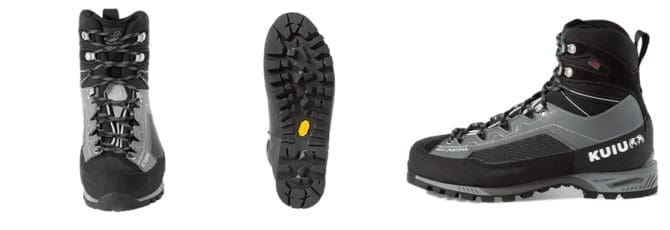
In September of 2019, I had the great fortune of tagging along on an Arizona early rifle bull elk hunt and planned to use this hunt as the test period for the break-in and review of the KUIU Scarpa Rebel K-8-HD Boot. The country I typically hunt in Montana is lacking in rocky terrain and I didn’t feel it would give me a true feel for the capability of the Rebel. It would also be a great test of the boot’s comfort and design to just lace them up and go straight out of the box to conquer the rocky, steep terrain where the Rebel K naturally roams.
This boot offers a Total Traction midsole paired with a Vibram Lug sole to provide the proper stiffness and traction required to traverse the worst talus slides one could dream up. I was completely impressed with the initial fit and “break-in” of the boot with the first day of use being a several mile loop into a rocky drainage to re-locate a bull before opening day. The stiffness of these boots took some getting used to but was far from being uncomfortable. After seven days of hiking up and down volcanic rocks with several 8-to-12-mile days, my feet felt great and had zero blisters or hot spots that usually come with boots not having been broken-in previously.
After we had a bull down, we made several trips up and down the volcanic mountain with heavy packs full of elk meat, cape and antlers with ease. With the warmer weather of an Arizona September elk hunt, the Rebel was plenty breathable for hot afternoon hikes back up the mountain to relocate bedded bulls. One key feature on the Rebel K-8-HD I liked is the stiff shank that keeps your feet protected from all the jagged rocks that would be felt with every step in a softer-soled boot.
Even after long days up and down the mountain, my legs and feet appreciated the lightweight sub-2 lb boot. Including an HDry waterproof-breathable membrane, full-rubber rand, and the Scarpa Sockfit design, the KUIU Scarpa Rebel K-8-HD is a solid performer and will make a great addition to your boot family as a stiff, mountaineering-style boot for rocky terrain.
Ben Britton: Crispi Colorado GTX - $360

My entire hunting career, I have battled with blisters on my pinky toes and heels along with nagging arch pain. This year, I decided to try my first pair of Crispi boots, the Colorado GTX, and am happy to report that I am blister and foot-pain free.
It took no time at all to break in these boots and have them feel molded to my foot. My problem areas have always been the width of the toe box, and stiffness of the boot which can cause my heel to lift leading to hotspots. I still prefer a stiffer boot, and in my experience, the stiffness makes it easier to climb and sidehill, especially with a loaded pack on. The Colorado’s are a level 4 stiffness in Crispi’s 1-5 scale and give plenty of support.
The Colorado GTX’s upper is a combination of leather and synthetic which helps make it a pretty lightweight boot, only 3.4 lbs for a pair. Its 8” height combined with Crispi’s ABSS (Ankle Bone Support System) locks the heal in place and helps to eliminate any hotspots. The highly durable yet breathable suede and Cordura help transfer the sweat out of the boot helping minimize foot movement, and seem to keep my socks feeling drier compared to a less breathable, all-leather boot.. The polyurethane-coated leather rand and kevlar triple-stitching allow this boot to take a beating for miles.
The downsides: It is an uninsulated boot, so glassing in low temps has caused me numb toes. It’s a tradeoff I am willing to make to not have sweaty and hot feet while hiking. If I had a late-season hunt with snow, I would need to purchase an insulated pair.
The other negative is the noise. Now that dirt has impregnated the laces there seems to be some squeaking where it runs through the eyelets. I’m going to try pulling my laces out and washing them, but if you have any suggestions shoot me an email, Ben@westernhunter.net.
Overall I am ecstatic about these boots and highly recommend them to anyone looking for a new pair of mountain hunting boots.
Kevin Guillen: Altra Tushar Boot - $200
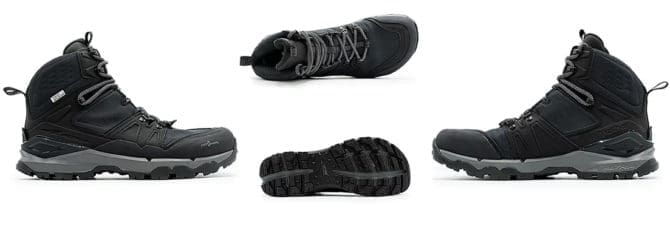
In this day and age, if you’re an outdoorsman with the belief that there’s one boot to do it all, I’m here to wake you up. Advancements in materials, design, construction, and our understanding of what will help us go farther with more comfort progress constantly. My case is not that your boot collection should rival your golf bag, although, for some of us, it already does. However, in the world of rugged footwear, there are gaps being filled with innovation that combine comfort, weight, and support in ways that will appeal to any western hunter. One of the most dynamic examples of this level of innovation is the Altra Tushar Boot.
I’ve been a fan and avid user of Altra shoes for almost six years. When I learned that there was a light hiking boot in the works, they immediately had my attention. Altra has built their reputation on running shoes, but like many hunters out there, I have used their Lone Peak Mid as a lightweight and highly-breathable boot for early archery hunts. While the Lone Peak Mid has served me well in many ways, the new Tushar Boot answers all the pitfalls in that design and carves out a niche of its own as a hybrid capable of withstanding the elements of big mountains or arid landscapes.
The Tushar Boot has the stiffness and ankle support you want for heavy packs, the weight and flexibility you need for nimble stalks, and the breathability you’ll enjoy on hot days. One standout feature for me is the recessed lace hooks that helped lock my heel in place. I’ve often experienced excessive heel-slip in other boots, especially when taking a heavy pack uphill, but the well-placed eyelets on the Tushar solve that issue.
Another benefit that my feet appreciated, especially hunting in the hot and thorny desert, is the eVent® upper which kept my feet cool, didn’t allow thorns to penetrate, and remained waterproof even over a two-day hunt that had very few breaks in the rain. I also loved that I could run my Kuiu Scree Gaiters on them comfortably – they fit together flawlessly.
But what about comfort? Like all Altras, the toe-shaped foot box and athletic design reminded me of the first night I slept on a memory foam mattress. They felt just as suited for a run as they did a heavy pack out.
I began testing this boot before the production model was released, so rest assured, the gray/red/white color you see here was only a prototype. The Tushar is available in green or black which fits right in with the color scheme hunters are after. Altra has done a great job of making key improvements with each evolution of their designs and I’m sure this will be no different. That said, this is one hell of a mountain ready platform for them to start with.
Mark Denham: Crispi Idaho II GTX
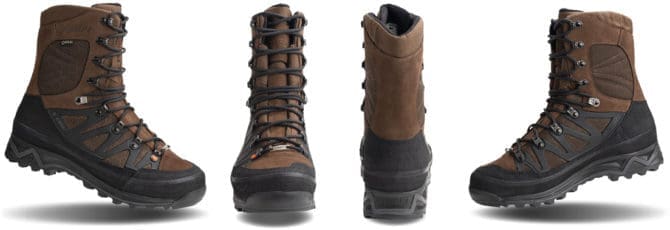
The first day of a 14 day long Arizona archery elk hunt is usually not the best occasion to pull a brand new pair of boots out of the box and strap them to your feet. One would also hope that you wouldn't be staying the entire 14 days, but I did and although I went home with no elk I came away with a great review of the Crispi Idaho II GTX.
The Idahos are a non-insulated 10” boot that make you feel like you could run a marathon through the mountains. Ankle stability is a critical spec for me when traipsing around the woods or the unforgiving rocks of southern Arizona. Finding a non insulated and breathable boot with a rock solid ankle is very hard. I find that most boots use thicker materials to provide that support and ultimately lack in breathability. The Idaho was a pleasant surprise with ample support for my ankles without being a hotbox for my feet.
It was a warm year to say the least and most of our afternoons were spent traipsing through deadfall and old burns in 75 degree sun. I never once felt like my feet were overheating or uncomfortable. With the right choice of socks I felt as though I would have been comfortable in a range of temperatures from the 40s all the way into the 90s. Which for some archery elk hunters in Arizona is not a swing that is out of the question during a two week hunt.
Now for the real test of durability and function we need to take things down south to Arizona’s desert coues deer country. I spent about 10 days with the Idaho’s in the most ankle snapping country you can find and although a bigger, heavier, leather full height boot would have been a smarter choice for ankle stability the Idaho outperformed my expectations. The blend of materials used in strategic locations allowed the boot to move freely around rocks but also provide a good amount of ankle support.
All in all, Idaho did impress. It has earned a spot in my closet for those hunts where you don’t need to worry about insulation and want to trade some weight and stability for a faster and lighter option.


